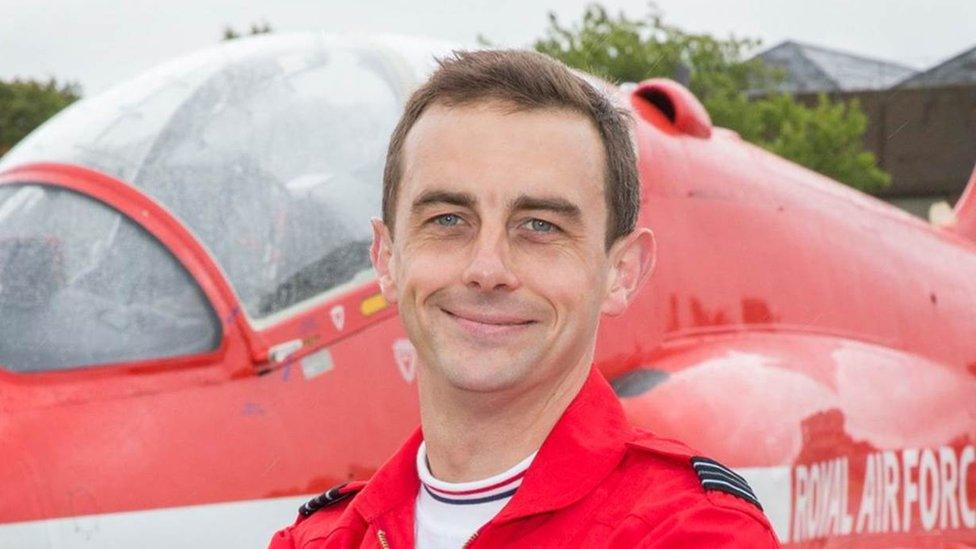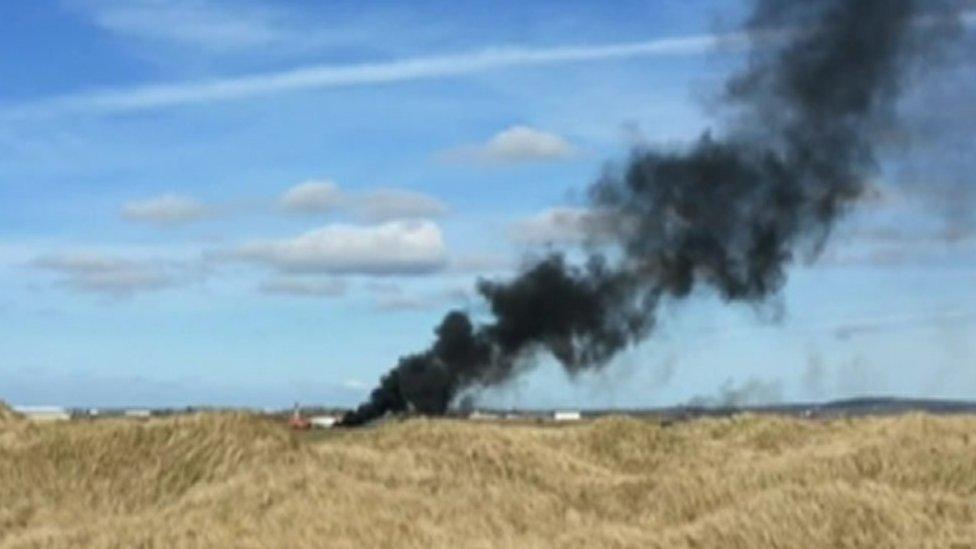RAF Red Arrows: Family claim failures had role in jet death
- Published

Cpl Jonathan Bayliss joined the Red Arrows team in January 2016
The family of an RAF engineer killed when a Red Arrows jet crashed at a Welsh airbase say they believe "systemic failures" had a role to play.
Cpl Jonathan Bayliss, 41, died in March 2018 when his Hawk jet crashed on a runway at RAF Valley on Anglesey.
Pilot Flt Lt David Stark survived after ejecting from the plane.
Ministry of Defence lawyers dismissed the failure claims at the pre-inquest hearing on Friday, and a full inquest will now take place in the autumn.
But speaking on a videolink to the hearing in Caernarfon, Cpl Bayliss's father told the coroner he believed the MoD had "failed to feed down relevant information to those who need to know".
Another family member said the corporal had been in a plane without the ability to eject himself.
Cpl Bayliss's sister Gayle Todd said: "We feel there were systemic problems. The incident could have happened without the loss of life to my brother had better procedures and safety measures been put in place."

The Red Arrow's display team jet crashed at RAF Valley on Anglesey in March 2018
A lawyer representing the pilot said a "systems failure" posed a risk to the occupants of the aircraft, adding the MoD "ought to have known as such".
According to an inquiry held by the MoD into the incident, the jet departed from RAF Valley with the intention of simulating an engine failure, before flying to RAF Scampton in Lincolnshire.
During the training manoeuvre, the plane stalled and crashed near the runway as it was flying too low to recover.
The Service Panel Inquiry found Flt Lt Stark was almost certainly fatigued and distracted at the time of the crash.
The panel added he may have had "an underlying level of fatigue" that could have affected his decision making and reaction times during the critical stages of the accident sortie.

Flt Lt David Stark was able to eject from the plane and survived the crash
But Charlotte Law, legal counsel for the pilot, said while the primary cause of the crash was the aircraft stalling: "That's not the end of the story. The question has to be asked why that occurred."
She said smoke pods fitted to the display team's Hawks could "mask" a warning vibration in the control column.
Representing the MoD at the pre-inquest hearing, Edward Pleeth said the tragedy had been caused by the plane stalling, and there had been no evidence of "systemic" failure.
Related topics
- Published10 October 2019

- Published20 March 2018

- Published19 June 2018

- Published23 March 2018
